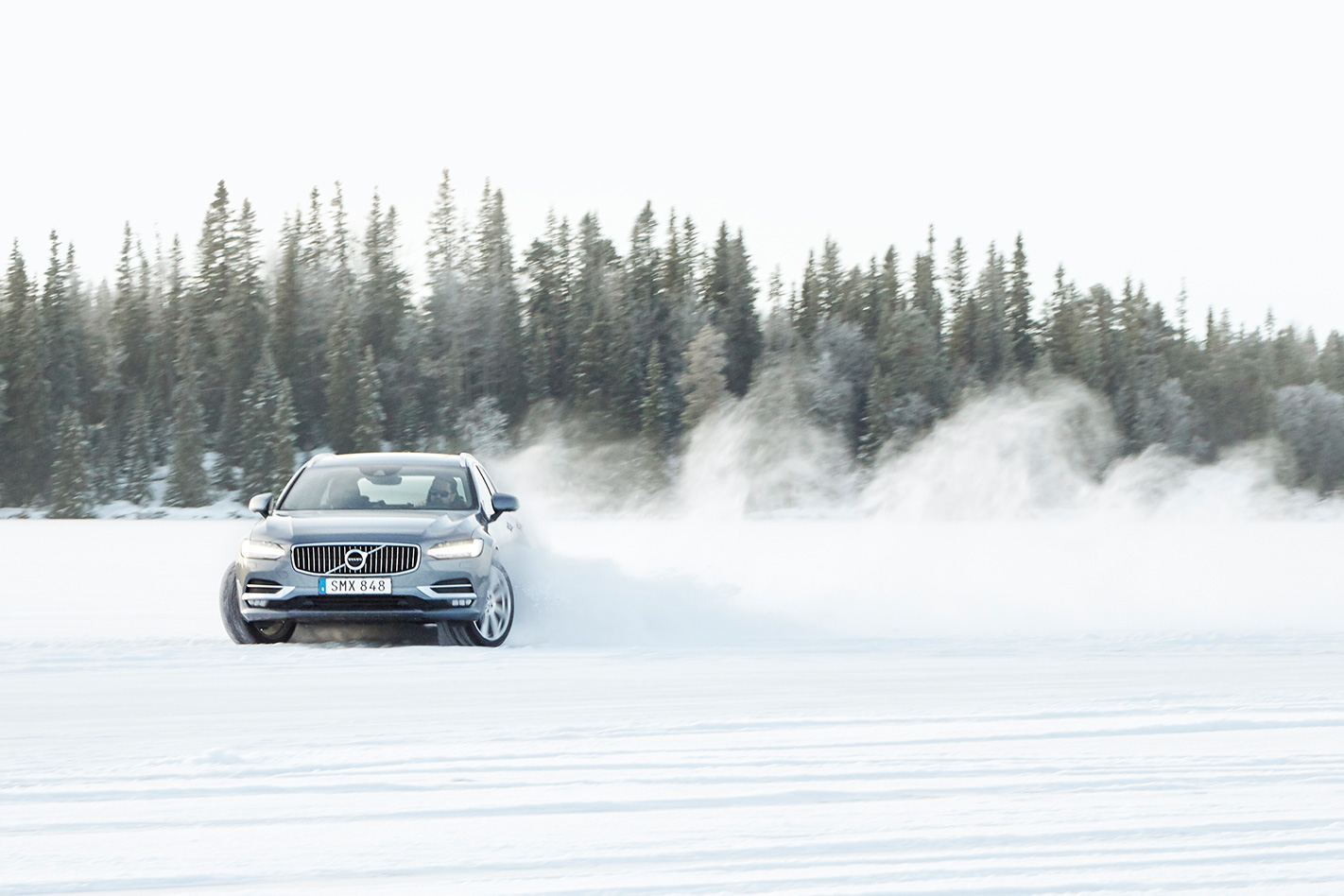
Five years ago I read an article in a foodie magazine in which the writer lost control of his car on an icy road after eating at Fäviken, a tiny, remote restaurant in northern Sweden.
“The car is sliding out from under us, gathering speed as it slips down the hill,” Allen Jenkins wrote.
“My first thought is that I am going to bleed out in a blizzard at the bottom of a 500ft fall, and no one will know for days. My next thought is: was Magnus Nilsson’s ‘broth of lamb filtered through the forest floor’ really to die for? The answer, after we smash into a barrier and write off the car, is, of course, no. But it was very good.”
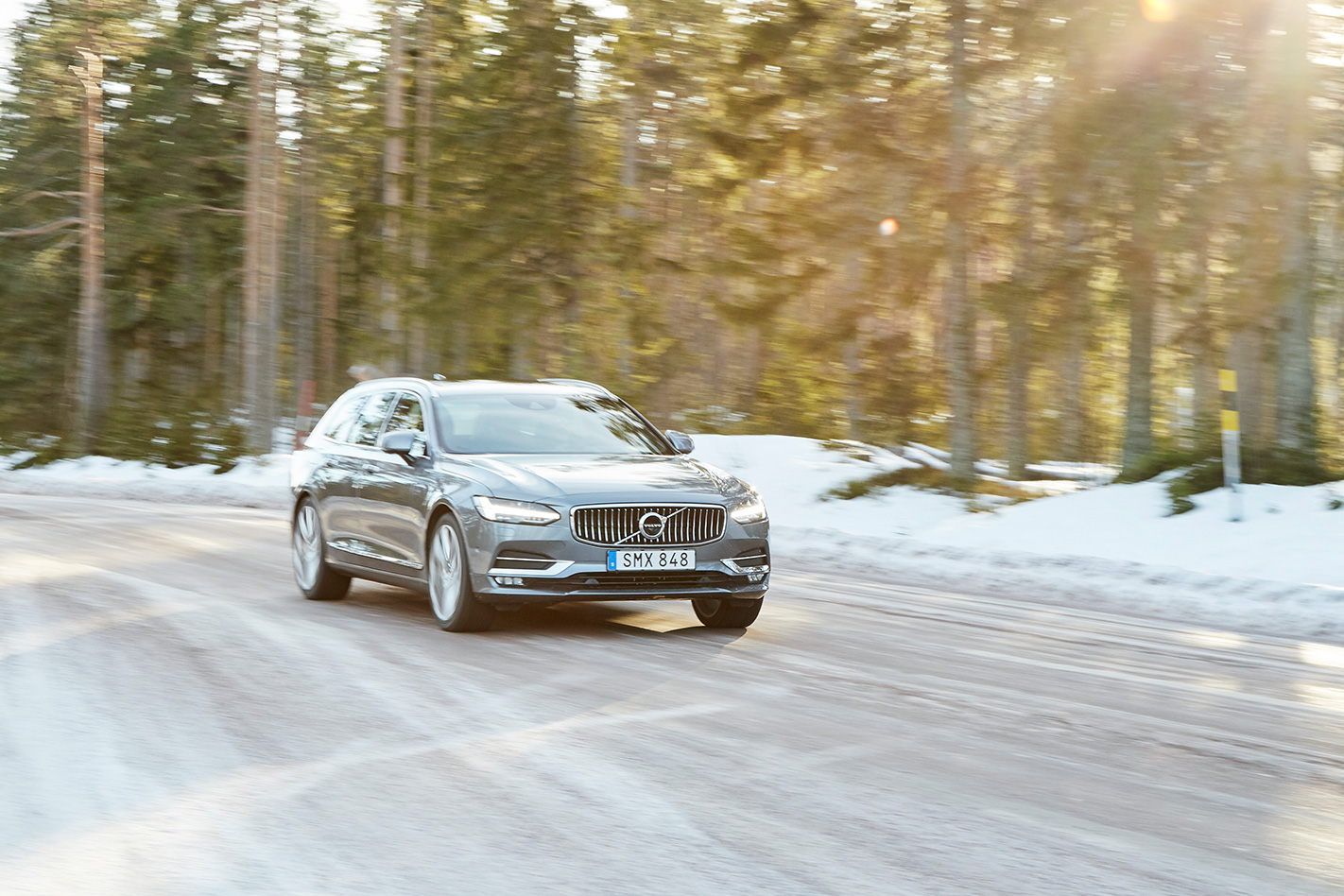
I’m probably the only person who read that and thought that a trip to Fäviken would be a great idea. It wasn’t the restaurant that interested me most, although it is an astonishing place. In winter, temperatures in the Jamtland region of northern Sweden can reach -40°C and the harsh winds from Russia can rip the roof from a barn. There is less than one inhabitant per square kilometre. Yet in a place where simply surviving might seem like a victory, a young Swedish chef and his tiny band of acolytes have established a restaurant which regularly features in shortlists of the world’s best, and which put the tastes and textures of its entire environment – including trees, ash and rotting leaves – on a plate, often for the first time.
Allen described it as ‘the restaurant at the end of the world’, and there is nowhere else like it on earth. Fäviken has doubled in size, but it can still only feed 24 people each night, when it’s open, and it took me all of those five years to get in. But I am not some obsessive foodie, and I don’t expect you to be to read this story.
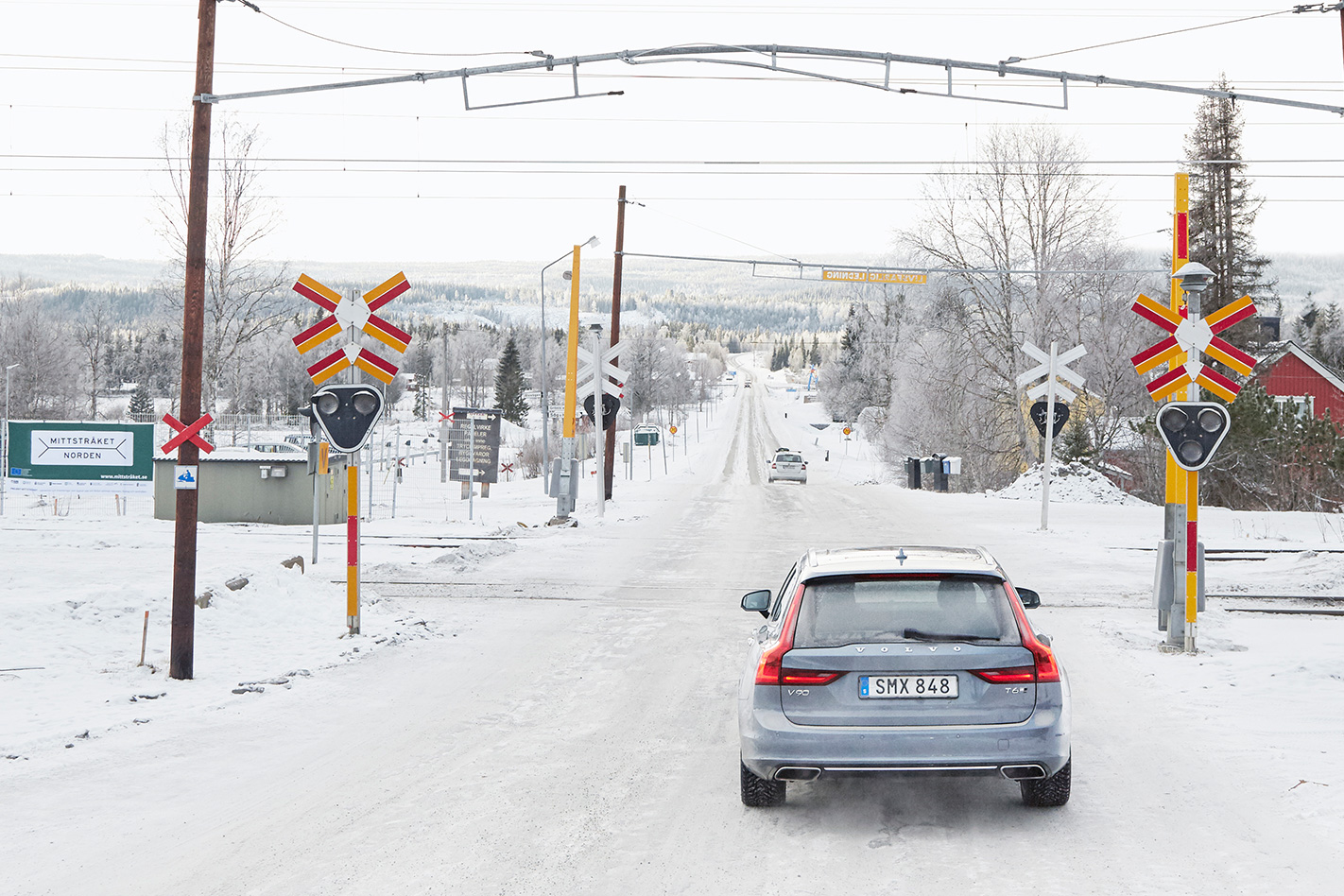
It was the intense Swedishness of both Fäviken and the 850km drive there from Volvo’s headquarters in Gothenburg that interested me most, because I couldn’t think of a more appropriate, more revealing test of a new Volvo.
I don’t think you can really understand Volvo until you’ve driven one in Sweden. We sometimes criticise them for languid steering and throttle responses, but that’s exactly what you want when driving all day on long straight roads covered in snow and sheet ice, as Swedes regularly do. Volvos have rarely been the sharpest handlers either, but that’s because Scandinavian drivers need loping, supple, long-travel suspension to cope with frost-deformed tarmac.
Low limits of both speed and grip make stiff springs and flat cornering irrelevant. Some of this stuff travels well. Read that last paragraph again, ignoring the snow, sheet ice and frost, and you could be describing a trip up the Stuart Highway. Customers in every country like the famous seat comfort and safety. And a Volvo should feel like a Volvo.
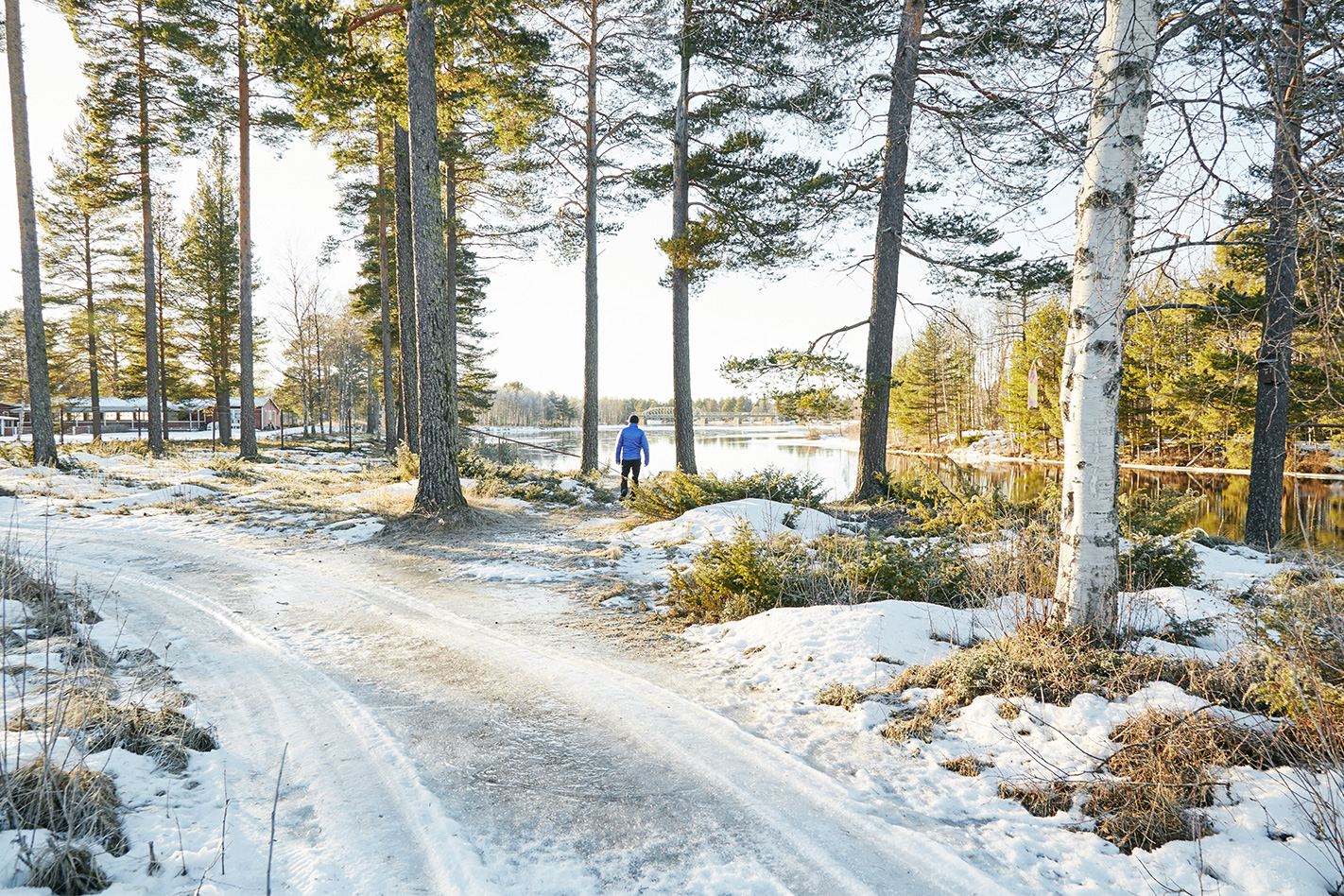
It’s rare for a carmaker to maintain such a distinctive tactile quality, but driven blindfold (not recommended) a Volvo has always felt as instantly recognisable as a Porsche, Ferrari or Rolls-Royce. After a near-death experience under Ford ownership in the financial crisis, Volvo was bought by Geely, which is investing $13bn in its new range of cars. The 90 family are the first of these. All three have had a rapturous reception for their design and tech, and their dynamics seem to get closer to bridging the gap between what Swedes and most of the rest of the world want.
But do they still feel as Swedish? Are they still designed for epic Scandinavian (or Australian) drives, or have they lost some of that distinctiveness chasing growth under Chinese ownership? Driving this far north, through conditions which killed a lesser car, to drink Fäviken’s beef broth filtered through moss, should be an appropriate test of its Swedishness. We emerge from the airport and an all-wheel- drive V90 is waiting for us, wearing studded Nokian Hakkapeliitta tyres and looking a bit overdressed for a snowless Gothenburg.
I had to take a Volvo V90. The XC90 might be more desirable and the jacked-up V90XC newer, but the V90 is Sweden on wheels. When I saw it unveiled at the Geneva motorshow last year I thought that it was the best-looking new car there, though never have I felt more like a middle-aged father of two than when getting the horn for a Volvo wagon. Ours is a T6 with the 235kW turbo- and supercharged 2.0-litre four, and all-wheel drive. We load up: three flight cases of camera gear and two bags full of Arctic clothes. Not enough to trouble the Volvo’s boot, but it has plainly traded some of its former loadbay for those looks.
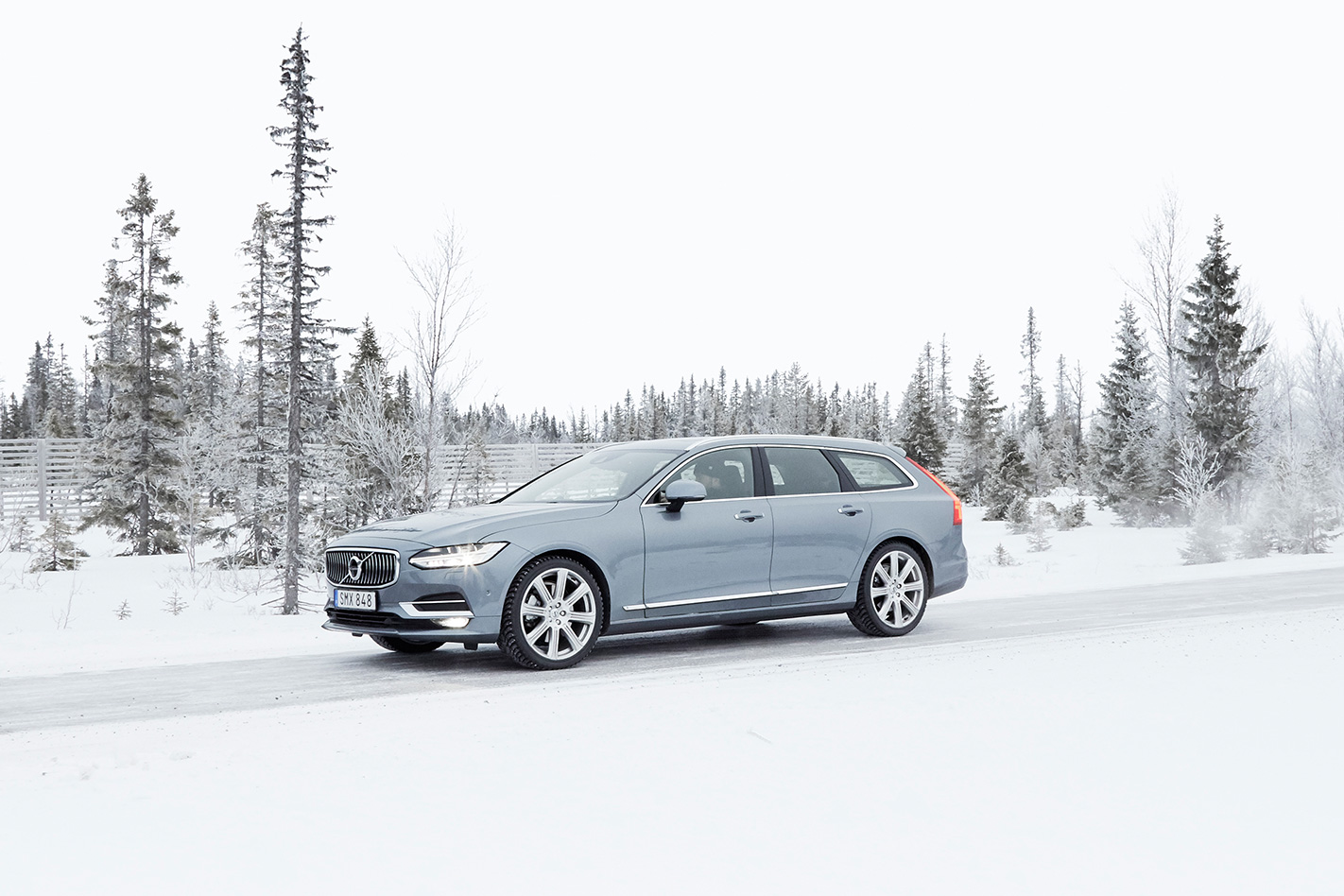
And much as I love that big, nine-inch portrait touchscreen and its ability to absorb most of the cabin’s functions and leave it uncluttered, the sat-nav’s clarity of instruction definitely needs work. But once out of Gothenburg, the turns are few and very far between. Sweden is an immensely civilised country and despite extreme weather conditions a trip like this should be undramatic, if your car is up to it. This trip is all about the feeling of long days at the wheel watching an achingly beautiful landscape develop around you, and how fresh the car leaves you feeling at the end of it.
The Swedes have a word for it: ‘framkomlighet’, or the ability to get you where you need to go: comfortably, sociably and safely. That’s what I’m seeking. A big, homegrown Holden used to do the same thing, We head north, skirting the mighty Vanern, the largest lake in the European Union. The light fails early here but we can still see the snow on the higher hills descending towards the road as we travelled, before lining the verges and finally spilling over them and smothering the tarmac. As the night deepens, the traffic lightens and the snowfall increases.
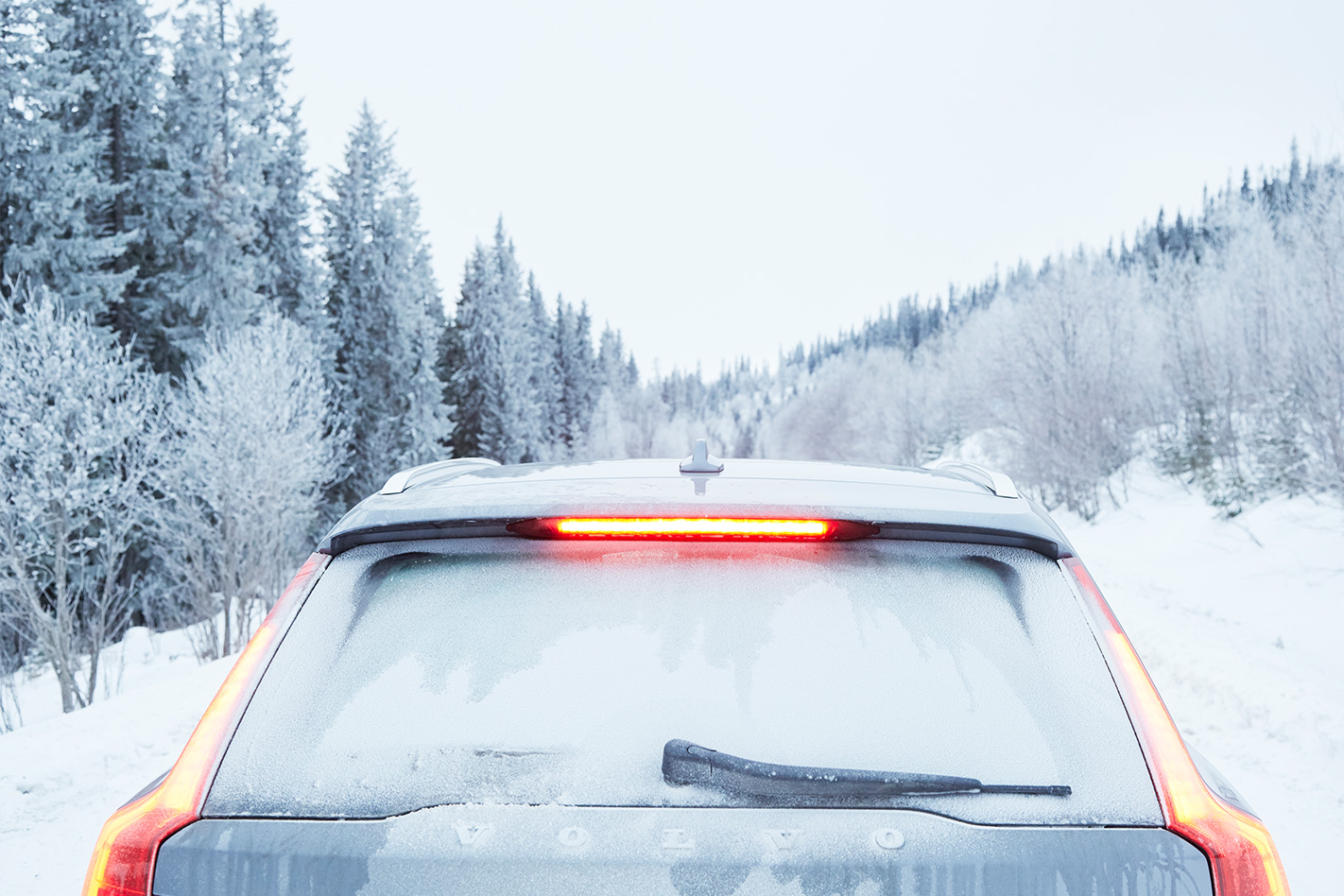
Soon we are following an articulated truck whose colossal array of spotlights sends a wall of daylight along the white-encrusted pines lining the road when the air is clear, and casts a mythic halo around the cab in fog or flurries of snow. Our hotel is just 425km north but the gain in latitude is enough to render our airport clothes useless against the cold: we would have run inside if the carpark was not an ice-rink. In one corner, a kid of about 13 lazily yet perfectly drifts a quad bike over the ice one-handed, waving at us with the other. The great thing about short winter days is that you don’t have to rise early for the blood-red sunrises that spill across these northern skies.
The main appeal of a road trip up here is stopping the engine, getting out of the car (briefly) and witnessing the extraordinary purity and silence. I can’t add much to the pictures, other than to try to explain the glittering diamond sparkle of fields of fresh snow, which a camera never quite seems to capture. You don’t see many people. The deep cold means they’re scarce even in the villages we pass through. Beyond the settlements, you glimpse people the way you spot leopards in Africa: rarely, briefly and distantly. We see a pair Nordic skiing in a far field, and a hunter with a black rifle over his shoulder walking alone by the side of the road, miles from anywhere.
Your encounters with Swedes are generally limited to those you meet at fuel stops. You will usually be served by someone who speaks your foreign language perfectly and looks like they have a PhD. One petrol station attendant cracks a very good joke in English before washing our apples for us. You don’t get that at the Dog on the Tuckerbox servo. I drive like a Swede: anticipating, leaving big gaps and rolling gently onto throttle and brake. Nobody rushes up here. It could be fatal. When driven like this, the V90’s mechanical grip, the subtle but very effective ESC system and those studded tyres mean a 100km/h cruise on an entirely white road is reasonable, though you’ll never get completely comfortable with a 150-plus-kay closing speed with a 38-tonne truck on a two-lane highway covered in sheet ice.
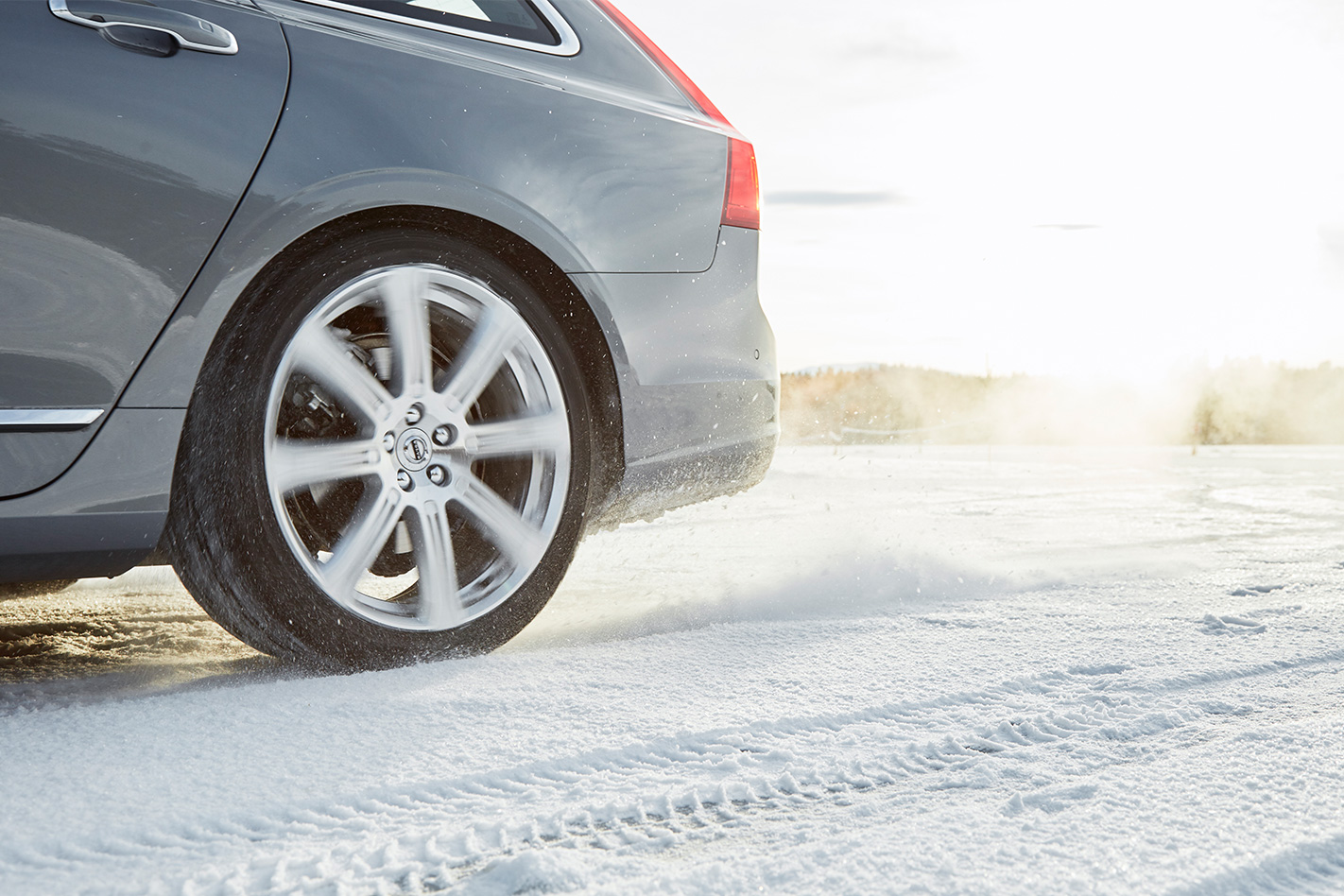
The default car up here still isn’t an SUV. It’s much like our V90: a big Swedish or German wagon on studded tyres, often with a roofbox and a Blomqvist-spec array of spotlights. I see one Range Rover on the whole trip. The V90 bounces happily down a rutted, entirely iced-over track and into a field of deep snow for a photo without losing traction, and on ‘normal’ roads the V90 feels entirely within its abilities.
Despite its huge specific output, the four-cylinder petrol is quite refined, but the ride is really magnificent. It’s perfectly judged, filtering out the occasional roughness of the ice and the impacts of the little ice shelves you cross, while keeping the body composed over the wave-form deformations in the tarmac caused by the constant freezing and thawing of the ground beneath. The seats are amazing too. I currently have two-thirds of a spinal disc in the wrong place and am sensitive to seat comfort. I thought the trip might cripple me, but I never feel stiff or sore.
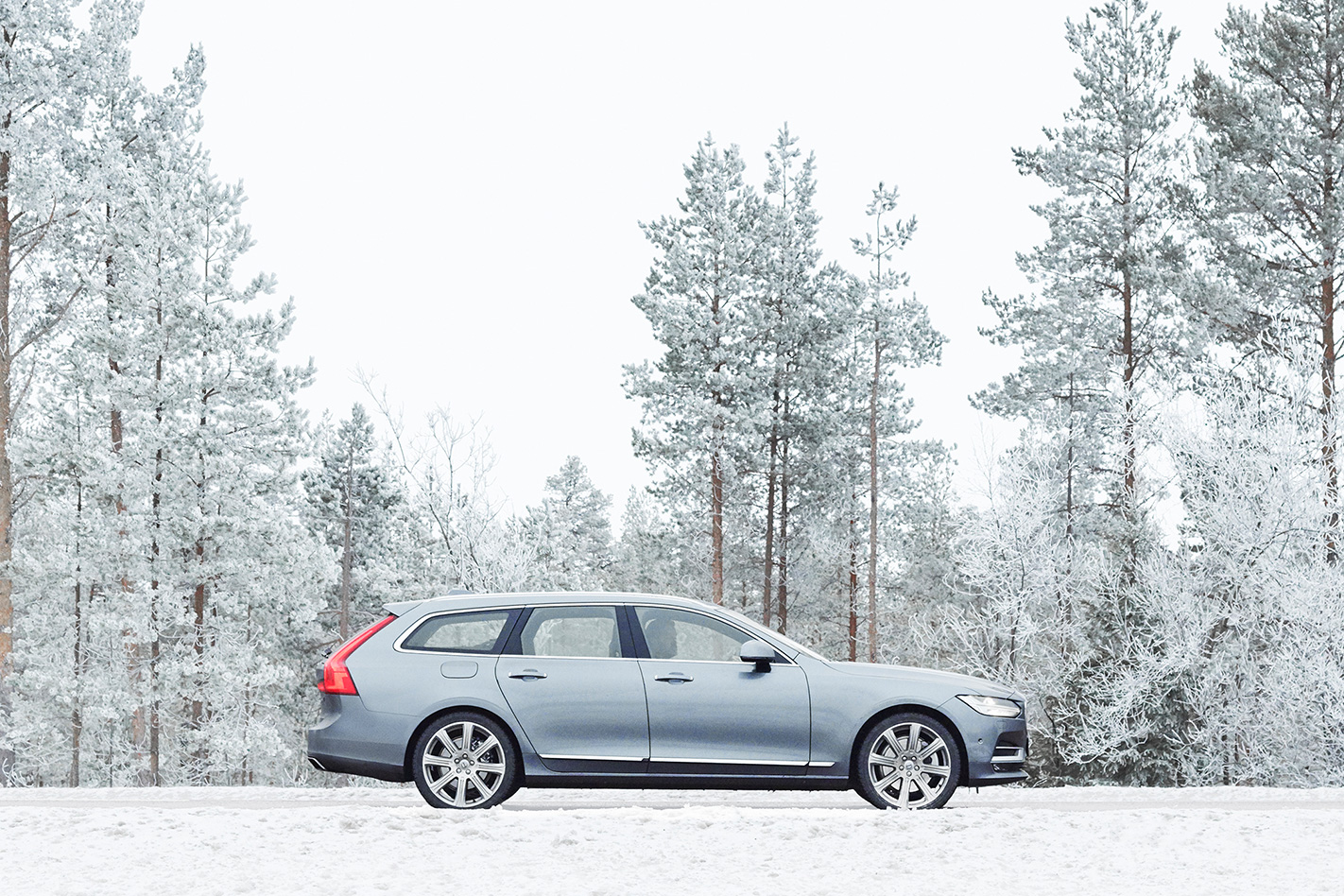
And some of the smaller details start to make sense. An optional heated steering wheel might seem like a bourgeois affectation elsewhere, but when the temperature goes below -10°C and your ungloved hands just hurt before they even start to feel cold, it’s necessary and welcome. It is after lunch on the second day that I begin to forget the difficulty of the drive and just enjoy the scenery and the conversation with photographer Ben Redgrove. Framkomlighet, I think they call it. This is still a Volvo. Finally, after five years and a three-day, 850km drive, I get to Fäviken.
A rough, snowed-over track leads down to a lake. Near the shore is a cluster of century-old timber- frame buildings, the only man-made structures we see for a dozen kays around. In a converted barn painted in that hallmark Swedish dark red is the restaurant. Or so we’d been told.

It seems as deserted as the rest of northern Sweden and it takes us ten minutes to find someone: a kitchen junior running through the snow pulling a cart laden with king crab legs, wearing only short-sleeved, thin cotton chef’s whites. It looks like a scene from a North Korean prison camp, bar the king crab legs. Eventually we find Magnus himself, who belies his Game of Thrones appearance and austere, monastic reputation with a kind tolerance of someone (me) who knows little about fine dining.
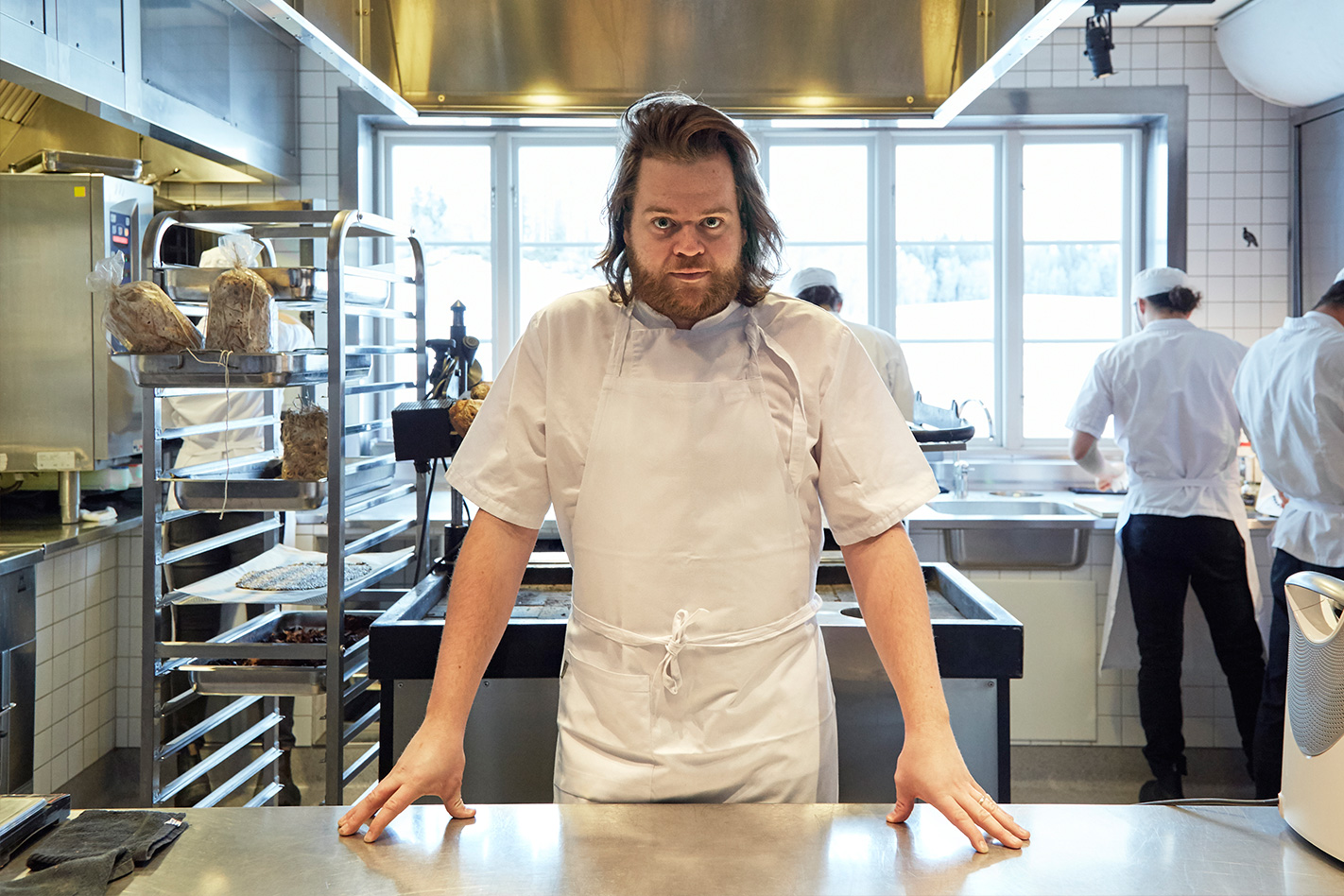
He shows us the tiny main kitchen, little bigger than a decent-sized domestic kitchen, and the prep space that looks more like a garden centre with its piles of juniper and spruce branches which will be used in tonight’s meal. The dining room in the old barn has vast, ancient low beams, low lighting and whole cured hams and dried fish and a wolfskin coat as slightly macabre hanging decorations.
There, after a sauna, I’m served probably the most extraordinary meal I’ll ever eat: 24 tiny courses, each designed to mess with your head. There are unfamiliar ingredients: fermented carrots and lupin curds. There are familiar ingredients used in jarring ways: the desserts are made with bone marrow, vegetables, and meat. And there’s stuff you never expect to see on a menu, like the egg coated in ash, or the broths of decomposing leaves and moss, or pine tree crumble. All of it tastes like nothing you’ve tasted before.
Some of it tastes better than almost anything else you’ve eaten. And some of it just doesn’t taste like food: you wouldn’t ask for second helpings of the spruce syrup on the ice cream, but when did you ever taste a tree before? You might only get one meal like this in your lifetime, and you might only want one meal like this. But when we spend much of each day buying, cooking and eating food almost without thinking, why not have one meal that forces you to?
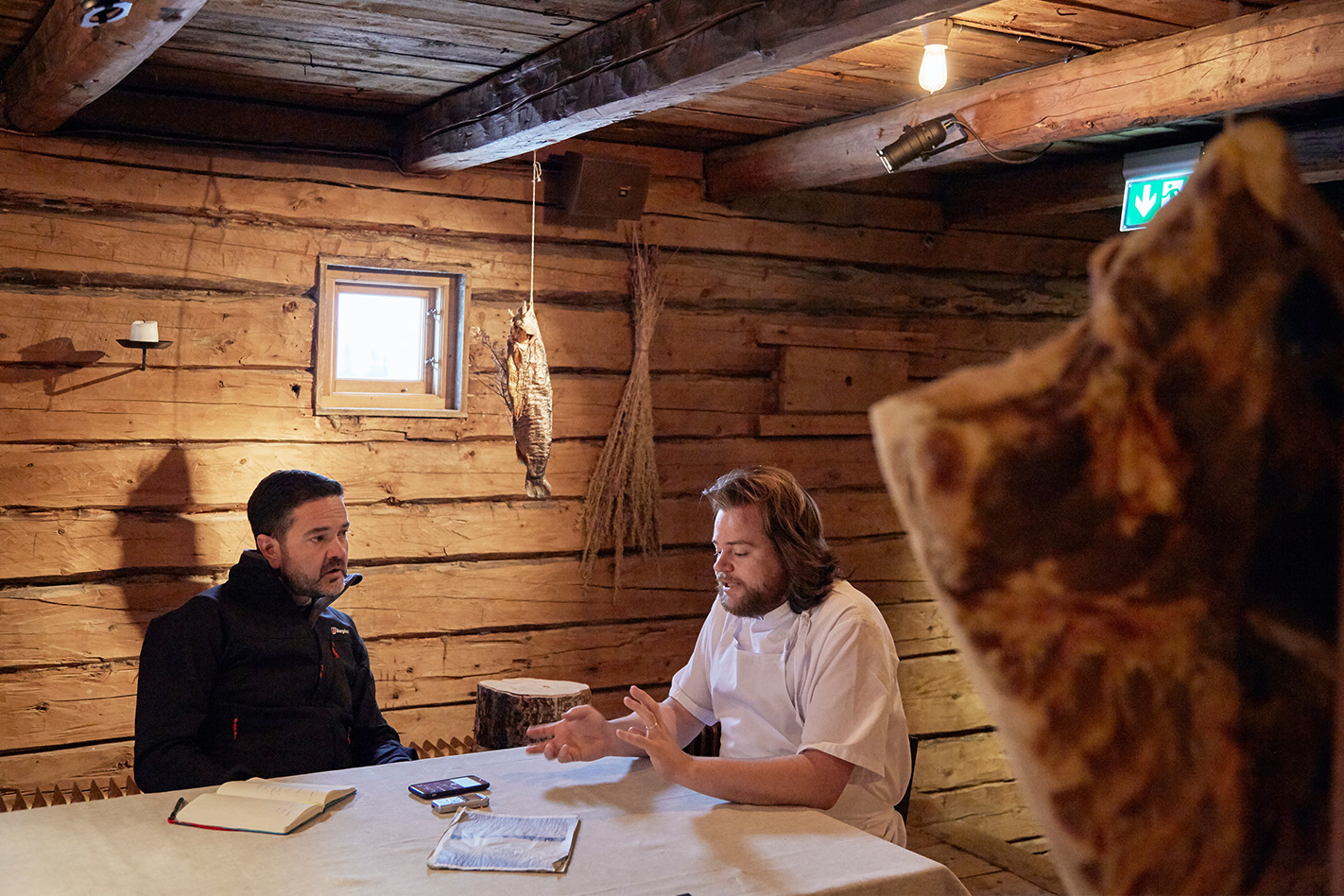
I ask Magnus if the long waits and arduous journey make his customers more receptive to this madness, and more determined to enjoy it.
“It feels like a bit of a pilgrimage,” he admits.
“You have to be motivated to come here. But that’s more of a feeling than it is actual. As a destination, it’s not as remote as it seems. But still: who wants to be the weirdo who goes to a restaurant at the ends of the earth, then thinks it’s no good?”
